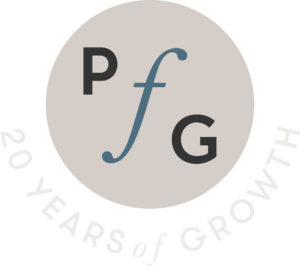If you’re new to the concept of venture credit and debt financing, it’s easy to get lost or misunderstood amidst complicated financing terminology. We’ve unpacked 5 key concepts that are important to understand when considering venture debt as your growth funding solution.
Whether you’re eager to start borrowing to finance working capital or just want to analyze your funding options, the following terms will give you a far greater understanding of how to approach venture debt conversations.
1. Closing Date
The Closing Date is key to the entire process as it is the moment where the agreement is finalized, meaning all legal documents become active and funds from the loan are made available to the borrower.
For the closing date to be reached, all terms and conditions as set out in the contracts and principle offers must be satisfied. So, when entering discussions with a view to signing term sheets, business decision-makers should set a focus on this date.
Several assignments must be completed between the time of signing a term sheet and the closing date itself. In most cases, experienced lenders like Partners For Growth can finalize this process in 3-5 weeks after signing the documents.
It may be necessary to push some steps back to the post-closure period, meaning they will be executed after the closing date. When this happens, the details will be noted in the documentation and legal fees may increase as extra work is required. However, when you want the closing date to be soon, this step is vital.
2. Maturity Date
The Maturity Date is one of the most important pieces of terminology for a business decision-maker to learn. It quite simply means the date at which the loan will be fully repaid, when the borrower is free from obligations of the debt.
For venture credit agreements, the maturity date is usually set 36 months after the closing date. In a standard amortizing loan, your business will make a total of 36 monthly repayments that include the repayment figure and the interest, with the last payment coming on the date of maturity.
Depending on the company’s growth trajectory and financial position, there may be an initial period, often 3 or 6 months, where the company does not have to make amortization payments (repayments of principal borrowed) and thus only makes agreed upon interest payments. This is referred to as the interest-only period, or IO period.
In a bullet payment structure, the final payment that is due on the maturity date will be a bullet (also known as a balloon) payment that will clear any remaining figure. This is likely to mean that the last payment will be bigger than the previous set of payments.
You may also be required to pay a maturity fee (also known as end of term payment or back-end fee) on either type of venture credit agreement. It’s important to fully understand fees schedules associated with the venture debt agreement as you are evaluating options.
3. Tranches
In many cases, the funds are available and released in full on the closing date. However, Tranches are the exemption from this rule and are used to release funds over time in a predetermined structure.
Tranches are typically pre-agreed between the borrower and lender and can be based on business performance or calendar date milestones. It may be a case of agreeing to initial funding of a partial amount of the total committed loan funds right away followed by further payments later down the line. While not all lenders will offer these structures, they can be very effective in saving cash interest costs for high growth companies that are looking to keenly allocate funds to enhance growth prospects.
Tranches give lenders comfort in matching the funding to business growth while it also protects borrowers from taking on too much debt too early in their lifecycle and ending up with debts they won’t be able to afford. It also provides a continued motivation tool. This is something that Partners For Growth can offer to many clients under various structures highly customized to each business plan.
4. Warrants
Warrants (also known as equity kickers) are essentially options that provide lenders with the chance to purchase shares in the company at a later date for a price that is determined while documents are drawn up.
This gives the lender the chance to increase their return, but only when the borrower performs well, which creates a mutually beneficial situation in which the goals are aligned and targeted on long-term success. The warrants do not impact the repayment plans or affect the maturity date.
Additional terms to know are the exercise price, as well as the life of the warrant agreement, or term. It is most common for this duration to be set to 10 years, starting from the closure date.
Warrant terms can be expressed in many different ways with various features depending on the borrower’s capitalization, or the amount and prices at which the company has previously raised equity. Commonly referenced figures are the percentage of fully diluted ownership and warrant coverage amount.
5. Observer Status
Observer status is when the lender wants to sit in on board meetings to monitor your business during the term of the loan. Not all lenders will require observer status, and it is important to consider in discussions with your lender.
While the observer status is primarily for the benefit of the lender, it can suit the borrowing business too. This is particularly noteworthy when the company isn’t working out in its current guise and could benefit from the advice of an outside partner that has an invested financial interest.
Another example of when it may be beneficial for the borrower is when the company is established and has a big board room. In this situation, the presence of an observer won’t impact the discussions while seeing the positive outcomes can support the case for additional venture debt funding.
Observer status will be agreed in advance and can take many forms, although it is very rare for the lender to require a full board seat.






